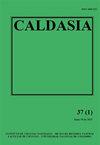安第斯外城市地区双翅目大翅目(双翅目:双翅目科)捕食风险的感知和栖息地利用
IF 0.3
4区 生物学
Q4 PLANT SCIENCES
引用次数: 0
摘要
外来物种的引进会对本地物种产生负面影响;例如,家犬(家犬狼疮)会增加它们被捕食的风险。我们评估了家犬和人类的存在对安第斯白耳负鼠(Didelphis pernigra)在哥伦比亚安第斯山脉的一个前城市地区觅食行为的影响。我们还使用放弃密度(GUD)技术研究了这种有袋动物的栖息地使用情况,即觅食者在利用收益递减的斑块后留下的食物量,这反映了个体所经历的觅食成本,包括被捕食的感知风险。我们在安第斯森林自然再生区域和波哥大河附近的蓝桉外来种植园中,用狗和/或人的存在进行实验,测量了GUD。负鼠更多地使用再生面积而不是种植园;种植园几乎无人参观。我们的研究结果表明,负鼠选择觅食地点取决于它们是否接触到潜在的捕食者。人类的存在减少了负鼠在再生森林中的觅食。此外,它们的觅食也受到月球光线的影响,但这种影响受到夜晚时间的调节。负鼠似乎没有意识到狗是一种威胁,这可能会增加它们对这些食肉动物攻击的脆弱性。本文章由计算机程序翻译,如有差异,请以英文原文为准。
Percepción del riesgo de depredación y uso de hábitat del fara Didelphis pernigra (Didelphimorphia: Didelphidae) en un área exurbana andina
The introduction of exotic species can negatively affect native species; for example, the domestic dog (Canis lupus familiaris) can increase their predation risk. We evaluated the effect of the presence of domestic dogs and humans on the foraging behavior of the Andean White-eared Opossum, Didelphis pernigra, in an ex-urban area in the Colombian Andes. We also studied habitat use by this marsupial using the giving-up density (GUD) technique, the amount of food left by a forager after exploiting a patch in which it experiences diminishing returns, and that informs about foraging costs experienced by an individual, including the perceived risk of predation. We measured the GUD’s in experiments with the presence of dogs and/or humans in an area in natural regeneration of Andean forest and in an exotic plantation of Eucalyptus globulus near the Bogota River. The opossums used the regeneration area more than the plantation; the plantation was barely visited. Our results suggest that the opossum chose foraging sites depending on their exposure to potential predators. The human presence reduced the foraging of the opossum in the regeneration forest. In addition, their foraging also was affected by the moon’s light, but this effect was modulated by the period of the night. The opossums do not seem to recognize the dog as a threat, probably increasing their vulnerability to the attack of these carnivores.
求助全文
通过发布文献求助,成功后即可免费获取论文全文。
去求助
来源期刊

Caldasia
PLANT SCIENCES-ZOOLOGY
CiteScore
1.30
自引率
16.70%
发文量
28
审稿时长
24 weeks
期刊介绍:
La revista está orientada a publicar contribuciones originales escritas en español o inglés relacionadas con la documentación, comprensión y conservación de la diversidad biológica. La revista contempla el tema de la biodiversidad en un sentido amplio y por tanto incluye trabajos en áreas como botánica, zoología, ecología, biodiversidad, biogeografía, taxonomía, sistemática, conservación, y disciplinas afines.
 求助内容:
求助内容: 应助结果提醒方式:
应助结果提醒方式:


